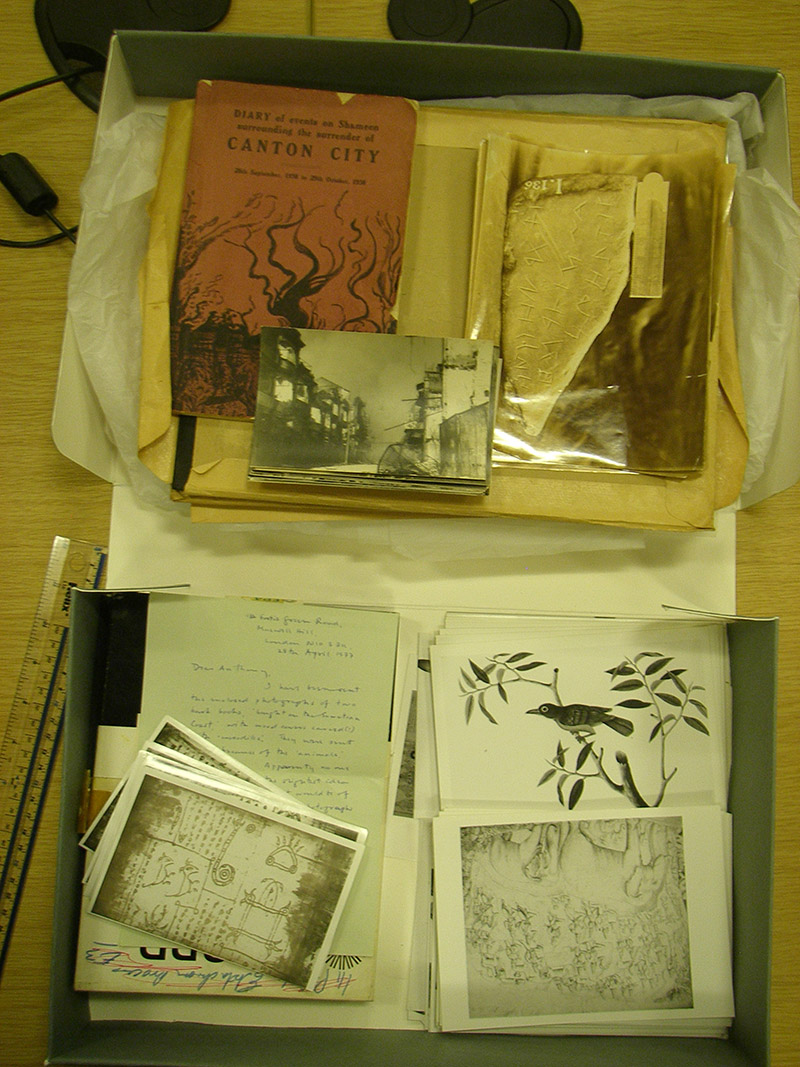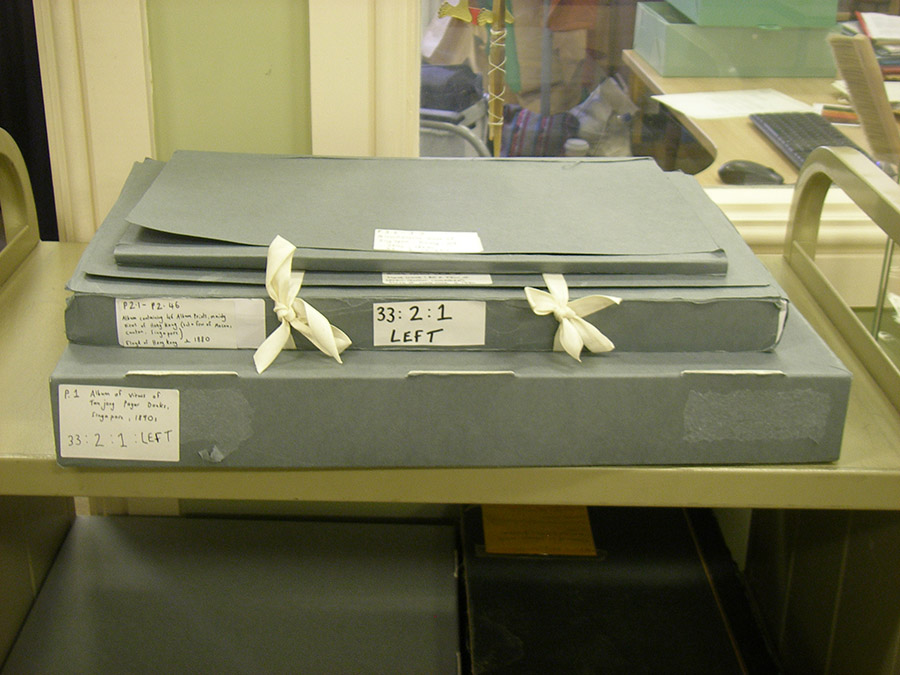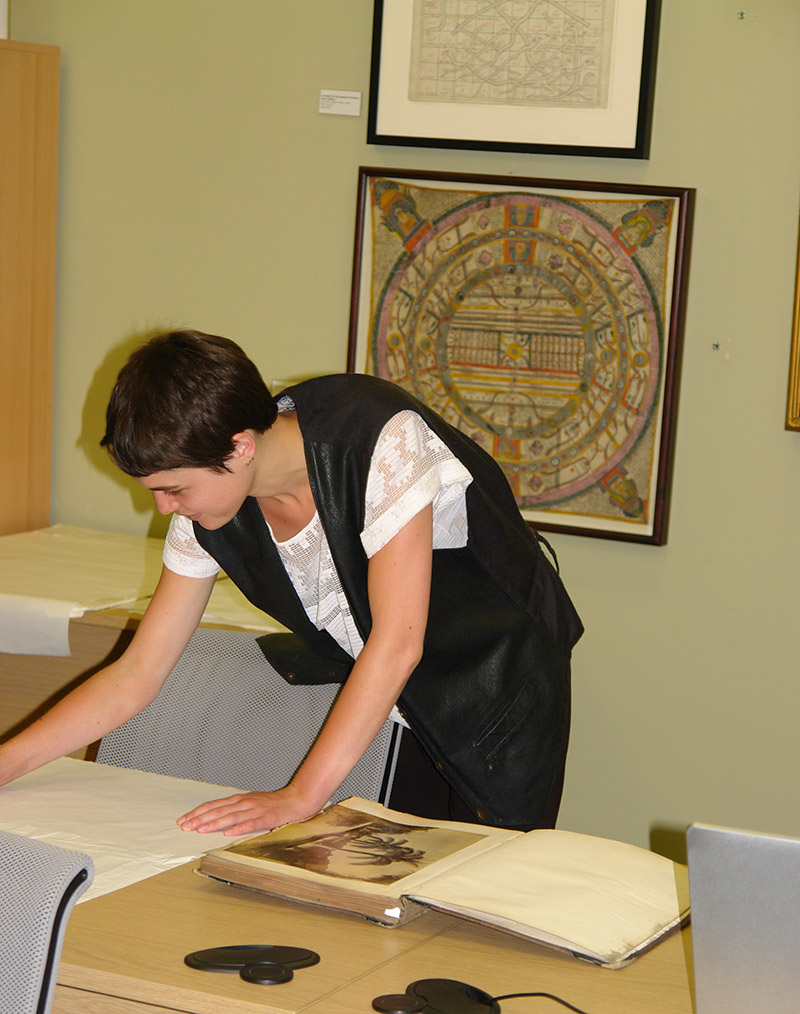Working with the RAS Photographic Collections
MA Student Ruby Rees-Sheridan shares her experiences during her placement at the RAS.
Placement at the RAS
As part of my MA in Art History and Museum Curating at the University of Sussex, students are required to undertake a four-week work placement. This is intended to put the practical and conceptual skills learnt on the course into practice. Since I am specialising in photography, working with the Royal Asiatic Society’s photographic collection has been an ideal opportunity. Having just completed the second week of my placement under the supervision of archivist Nancy and librarian Ed, I have already learnt so much and gained valuable insight into the daily workings of an archive.
Project So Far
The primary task of my placement has been to undertake an initial audit of the photographic collection. The dual aims of this task were firstly, to check the RAS’s holdings against the printed and online catalogue to determine their accuracy and completeness, and secondly, to assess the condition of the photographs and their current packaging and housing. I gathered key information including each collection title, catalogue entry, number of prints and condition into a spreadsheet. This document was intended to serve as a point of reference for carrying out future tasks, such as creating a full online catalogue and ensuring that all photographs were appropriately housed.

The RAS collection contains around 5000 photographs dating from the 1860s to 1970s, so there was a lot to keep me occupied. Delving into this wonderfully diverse collection was like opening presents on Christmas morning. Each box brought up from the archive offered new surprises, from anthropological and archaeological studies to carte-de-visites, mounted prints by professional photographers to albums of personal snapshots, official surveys, stereograms and postcards. In one day I could travel from Iran to India via Java and Hong Kong (and between the archive in the basement and reading room on the first floor enough times to constitute a work out).
During the auditing process I discovered a few mystery items absent from the RAS catalogue, including a beautiful album of tinted Japanese prints and a set of postcards from Algiers. It was satisfying to catalogue these items and increase future access to them. Will all the collections listed in one document, Nancy was also able to locate and identify missing and unnumbered items.

Once the initial audit was completed, my second task was to devise a suitable system for cataloguing the photographs. Under Ed’s direction, I wrote up a set of guidelines for cataloguing the photographs at both collection and item level. The intention was to create a standardised system that future volunteers at the archive could follow. We also made some alterations to the online catalogue to improve usability, namely updating the existing numerical titles of the photographs to descriptive ones, making it easier for researchers to search and identify prints. Compared to the initial audit, I found cataloguing a more challenging task. Accustomed to handling and describing individual photographic items, I now had to think about the collection in broader terms. This task has provided me with a very helpful understanding of how catalogues are constructed and how physical objects are translated into a digital context.
This week, my placement has taken a more practical turn. Nancy has ordered relevant packaging material based on the descriptions I provided in my initial audit, and has shown me how to clean and interleave the pages of albums and create four-flap enclosures in which to house them. Similarly to the catalogue, our aim is to develop a standardised approach which subsequent volunteers can adopt.

To be Continued
My placement so far has been very rewarding. Nancy and Ed have been fantastic at providing me with a taste of the different aspects of working in an archive. Already, I have learnt about the best practices for conserving photographic materials, methods of cataloguing and practical techniques for housing historical photographic collections. From creating metadata to cleaning album leaves, I have been surprised by the diversity of tasks that archivists undertake.
In the weeks to come I will be taking a more curatorial approach to the archive, working with the photographic collections webpage as well as creating a display for the reading room that highlights a collection. With so many fascinating prints to choose from, I think this will prove a difficult but enjoyable task!

We are very grateful for all the help that Ruby is providing through this placement. It is exciting to see our Photographic Collections being made more accessible to researchers.
